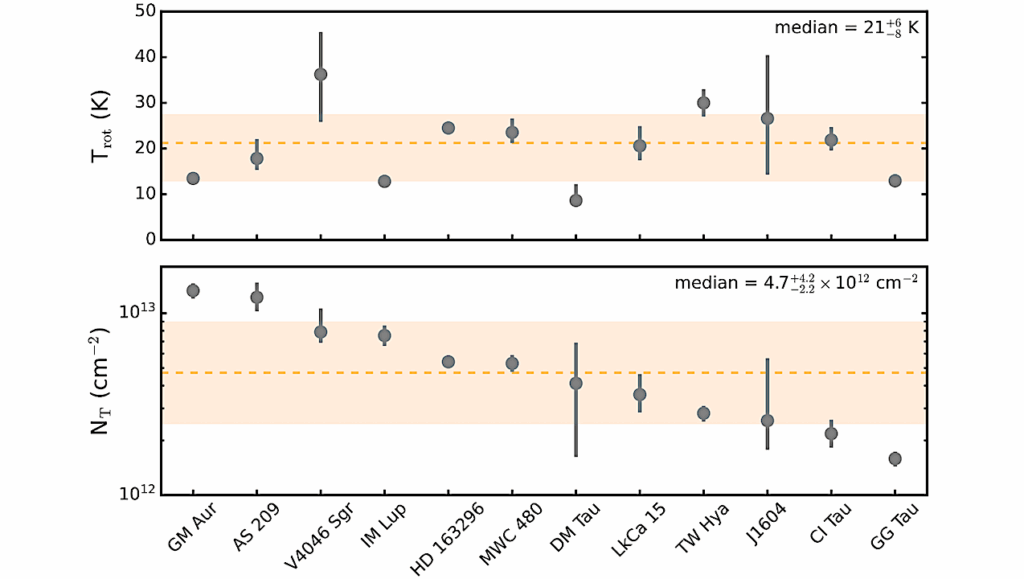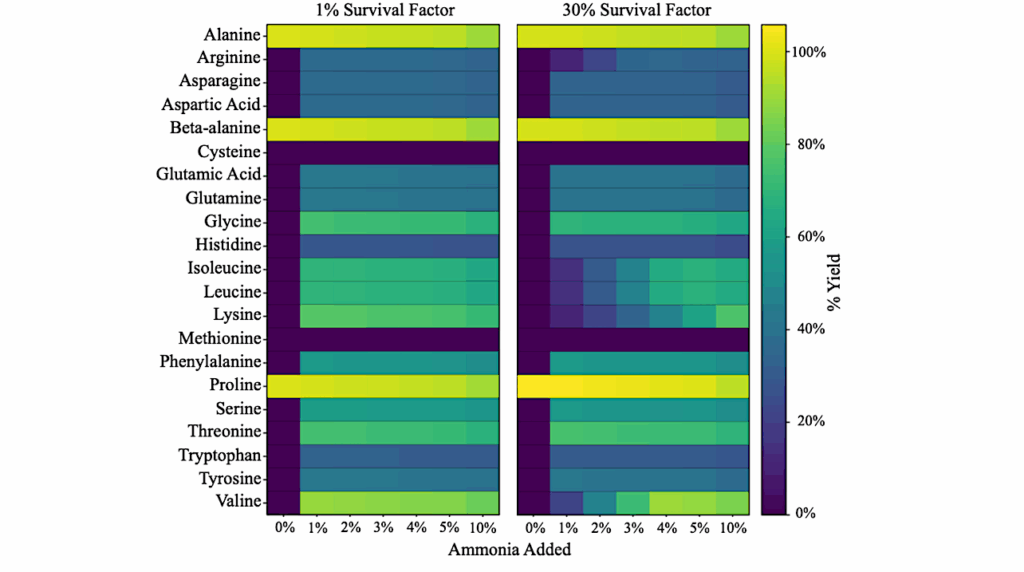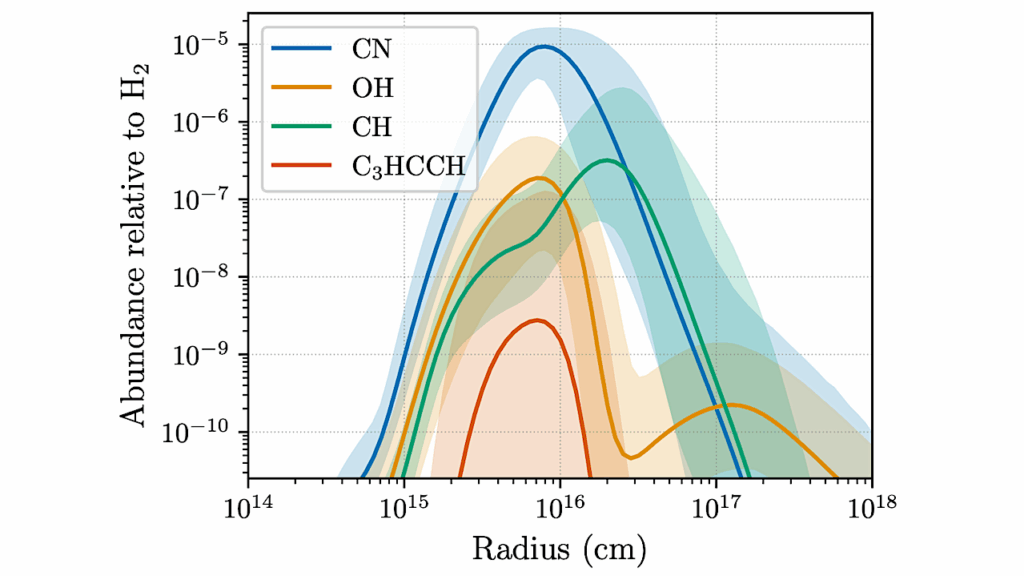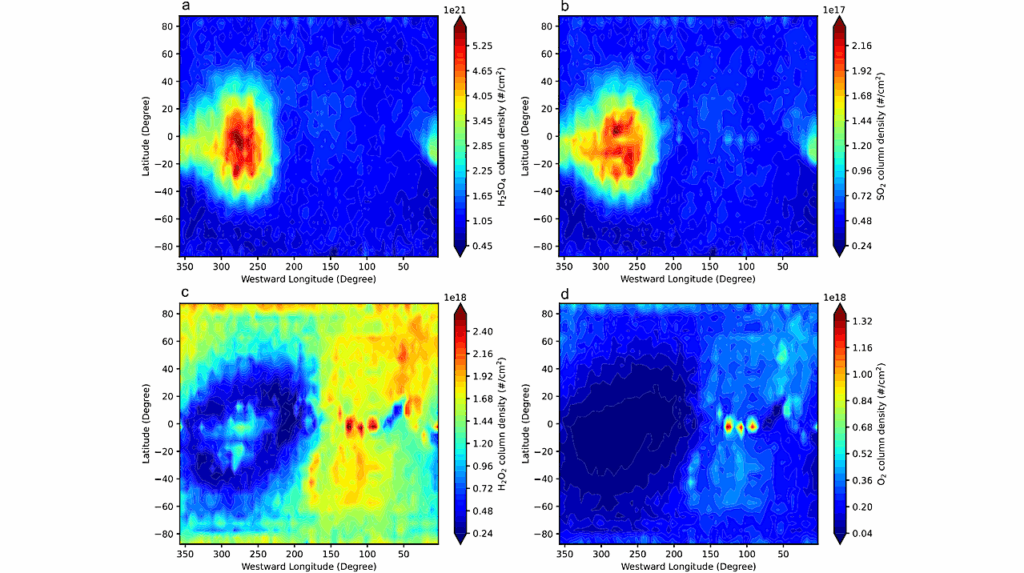The Influence of 10 Unique Chemical Elements in Shaping the Distribution of Kepler Planets
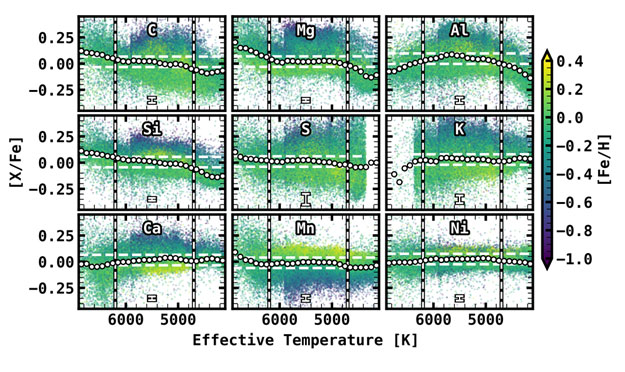
The chemical abundances of planet-hosting stars offer a glimpse into the composition of planet-forming environments.
To further understand this connection, we make the first ever measurement of the correlation between planet occurrence and chemical abundances for ten different elements (C, Mg, Al, Si, S, K, Ca, Mn, Fe, and Ni). Leveraging data from the Apache Point Observatory Galactic Evolution Experiment (APOGEE) and Gaia to derive precise stellar parameters (σR⋆≈2.3%, σM⋆≈4.5%) for a sample of 1,018 Kepler Objects of Interest, we construct a sample of well-vetted Kepler planets with precisely measured radii (σRp≈3.4%).
After controlling for biases in the Kepler detection pipeline and the selection function of the APOGEE survey, we characterize the relationship between planet occurrence and chemical abundance as the number density of nuclei of each element in a star’s photosphere raised to a power, β. β varies by planet type, but is consistent within our uncertainties across all ten elements.
For hot planets (P = 1-10 days), an enhancement in any element of 0.1 dex corresponds to an increased occurrence of ≈20% for Super-Earths (Rp=1−1.9R⊕) and ≈60% for Sub-Neptunes (Rp=1.9−4R⊕). Trends are weaker for warm (P = 10-100 days) planets of all sizes and for all elements, with the potential exception of Sub-Saturns (Rp=4−8R⊕).
Finally, we conclude this work with a caution to interpreting trends between planet occurrence and stellar age due to degeneracies caused by Galactic chemical evolution and make predictions for planet occurrence rates in nearby open clusters to facilitate demographics studies of young planetary systems.
Robert F. Wilson (1 and 2), Caleb I. Cañas (3 and 4), Steven R. Majewski (1), Katia Cunha (5 and 6), Verne V. Smith (7), Chad F. Bender (6), Suvrath Mahadevan (3 and 4), Scott W. Fleming (8), Johanna Teske (9), Luan Ghezzi (10), Henrik Jönsson (11), Rachael L. Beaton (12 and 13), Sten Hasselquist (14), Keivan Stassun (15), Christian Nitschelm (16), D. A. García-Hernández (17 and 18), Christian R. Hayes (19), Jamie Tayar (20 and 21) ((1) University of Virginia Department of Astronomy, (2) NASA Goddard Space Flight Center, (3) The Pennsylvania State University Department of Astronomy & Astrophysics, (4) The Pennsylvania State University Center for Exoplanets and Habitable Worlds, (5) Observatório Nacional, (6) Steward Observatory, (7) NSF’s NOIRLab, (8) Space Telescope Science Institute, (9) Carnegie Earth and Planets Laboratory, (10) Universidade Federal do Rio de Janeiro, (11) Malmö University Materials Science and Applied Mathematics, (12) Princeton University Department of Astrophysical Sciences, (13) The Observatories of the Carnegie Institution for Science, (14) University of Utah Department of Physics & Astronomy, (15) Vanderbilt University Department of Physics and Astronomy, (16) Universidad de Antofagasta Centro de Astronomía, (17) Instituto de Astrofísica de Canarias, (18) Departamento de Astrofísica Universidad de La Laguna, (19) University of Washington Department of Astronomy, (20) University of Hawai’i at Manoa Institute for Astronomy, (21) University of Florida Department of Astronomy)
Comments: Accepted to AJ; 25 Figures; 67 Pages
Subjects: Earth and Planetary Astrophysics (astro-ph.EP); Astrophysics of Galaxies (astro-ph.GA); Solar and Stellar Astrophysics (astro-ph.SR)
Cite as: arXiv:2111.01753 [astro-ph.EP] (or arXiv:2111.01753v1 [astro-ph.EP] for this version)
Submission history
From: Robert Wilson
[v1] Tue, 2 Nov 2021 17:25:35 UTC (13,678 KB)
https://arxiv.org/abs/2111.01753
Astrobiology


